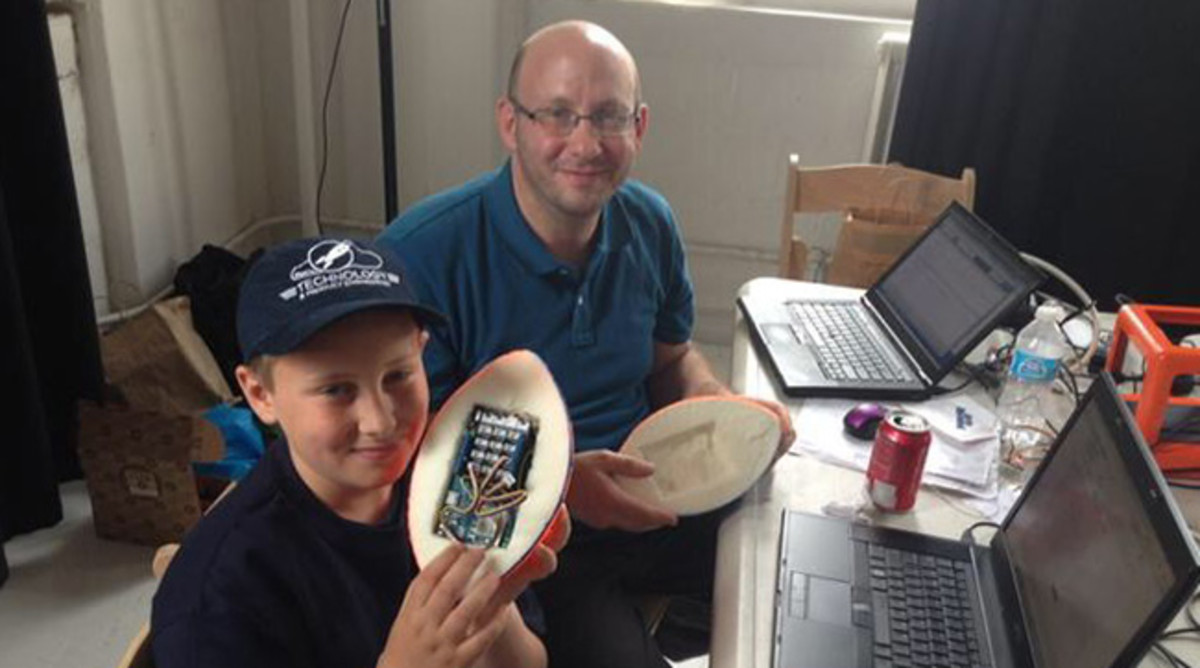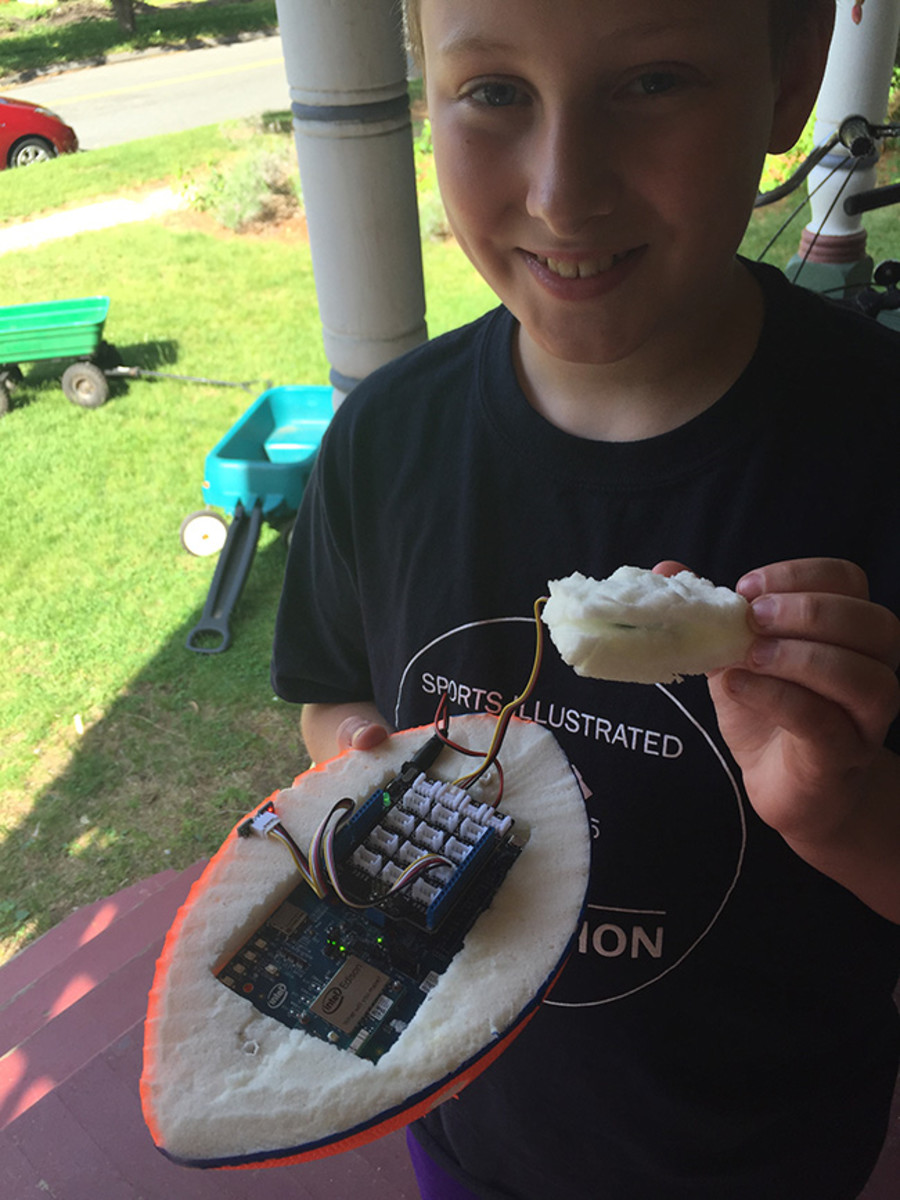Father-Son Tech Team Create Smart Football


Technology and sports are intersecting faster and in more ways than ever before. From connected equipment to smart gear, like uniforms and shoes, athletes at every level have access to a vast amount information about their game.
The thing is, though, that one sport seems to be missing from the technological revolution: football.
The NFL uses Microsoft Surface tablet on the sidelines and sensors are making their way into helmets to monitor violent head hits for possible concussions. But unlike baseball, basketball, tennis, golf, and soccer, there isn’t a way for players — in this case, quarterbacks — to get instant feedback on how accurately they throw a football.
Programmer Paul Langdon and his son, Max, want to change that.
At a Sports Illustrated-sponsored hackathon held in New York in May, they presented a prototype of a smart football. Wired with two sensors, the ball collected data on how far the ball was thrown, the quality of the spiral, and real-time, throw-by-throw scores. All that information was sent to an app, which rates and scores every throw to help guide improvement. The app also used Sports Illustrated-provided historical data on NFL QBs and games to allow users to compare their metrics with those of some of the game’s all-time greats.
The football is the latest project from a father-son team who spends a lot of time working together on technology projects from their home in Hartford, CT.
Their “technology journey,” as Paul puts it, began two years ago when they worked on a robot. “Since then, Max and I have also built a 3D printer. We're kind of enjoying the maker movement stuff. Every once in awhile we'll break out the electronics kit and brainstorm something new.”
The idea for the smart ball came from Max, who plays football, rugby, baseball, and basketball. “Every time I play football, I think of stuff that can help me throw better or work on my spiral or come up with different ways to do things,” he says.
The first step to make the ball was to find a way to get a sensor into it. Connected basketballs have a small sensor bad built into the inside of the ball. But because Paul and Max were creating something new, they needed to start from scratch. So they took a Nerf football, cut it open, and stuffed credit card-sized sensor boards into it.

Once they got that worked out, they needed to do something with the data. The father-son team wrote an app to present the information to users to help them work on their skills. But Max thought the app could do more.
“We added a social and gaming aspect to it where you could play a fantasy-type football with your buddy,” Paul says. “We kind of brainstormed in this 24-hour session this game portal where not only could you play to get your own stats or game better, you could play an online game where you don't have to be in the same geographical place. You can have a series of downs and play your game, and then your buddy could four hours later out in California play the same game against you and you could compare your head-to-head stats.”
The football prototype and app wowed the hackathon crowd and earned Paul and Max the second-place Innovation Award. And now that they know there’s interest for this kind of product, they plan on refining it.
The next steps are to improve the ball and work on getting the technology good enough — and small enough — to fit into an actual pigskin football. At the same time, they want to flesh out the rest of the app and make that experience as good as possible.
And, of course, encouraging each other’s creativity and love of technology.
“As we were driving down [to the hackathon], we were kind of brainstorming on what we could do. And it was, like, one fantastic idea after another that max had,” Paul says. “I can’t be more of a proud dad.”
Photos: Paul Langdon
